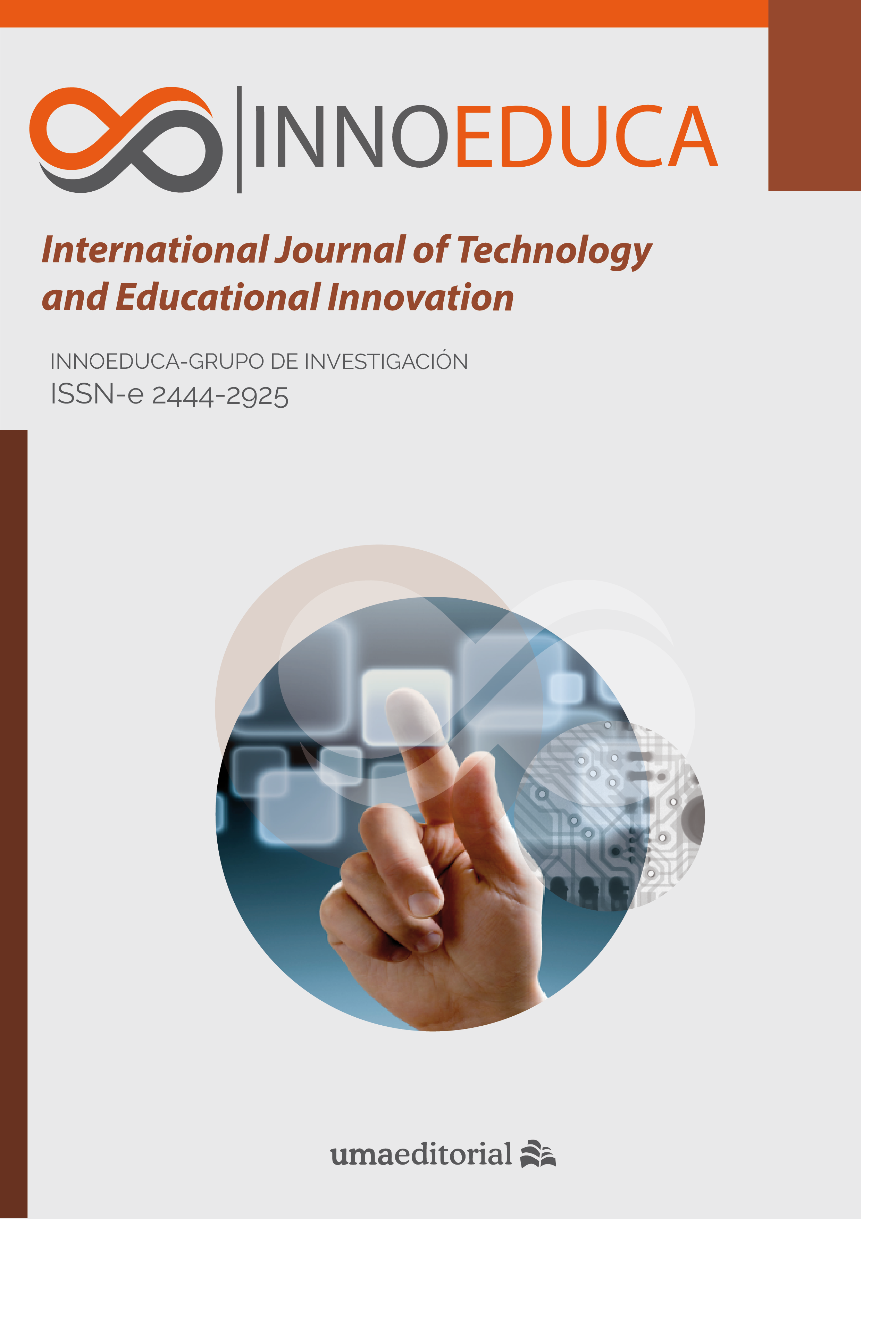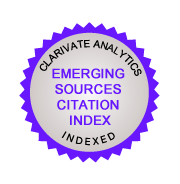Connectivity divide reality in the Spanish educational area: analysis of the current situation
DOI:
https://doi.org/10.24310/innoeduca.2020.v6i1.7741Abstract
The Internet has become an essential tool in the society in which we live, so schools have not been indifferent to this phenomenon. Its use has become an indispensable action in the daily work of an educational institution.
Through this study we aim to analyze the current state of connectivity in the Spanish education system, and to determine the connectivity divide that exists between the different Spanish regions.
It has been observed from a general perspective that, unlike teachers' and students' beliefs in the different educational centers, connectivity is in an optimal condition, with an average percentage of connection availability in the classrooms of more than 90%. However, not all autonomous communities enjoy the same quality of connection, with significant differences depending on the region where the focus is placed. This is a disadvantage in developing a pedagogical sequence based on technology in the classroom.
Downloads
Metrics
Publication Facts
Reviewer profiles N/A
Author statements
Indexed in
-
—
- Academic society
- N/A
- Publisher
- Universidad de Málaga
References
Alexander, B., Ashford-Rowe, K., Barajas-Murphy, N., Dobbin, G., Knott, J., McCormack, M., Pomerantz, J., Seilhamer, R., y Weber, N. (2019). Educause Horizon Report. 2019 Higher Education Edition. Louisville: Co: Educause.
Barrera-Osorio, F., y Linden, L. L. (2009). The use and misuse of computers in education: evidence from a randomized experiment in Colombia (Policy Research Working Paper, 4836). Washington DC: World Bank.
Barrett, P., Davies, F., Zhang, Y., y Barrett, L. (2017). The Holistic Impact of Classroom Spaces on Learning in Specific Subjects. Environment and Behavior, 49(4), 425-451. https://doi.org/10.1177/0013916516648735
Brown, J., Ortiz-Padilla, M., y Soto-Varela, R. (2020). Does Mathematical Anxiety Differ Cross-Culturally? Journal of New Approaches in Educational Research, 9(1), 126-136. doi:http://dx.doi.org/10.7821/naer.2020.1.464
Cabero, J. (2015). Inclusio?n digital – inclusio?n educativa. Sinergia, 2, 15–18. Recuperado de http://telebachilleratoenchiapas.gob.mx/wpcontent/uploads/2015/08/SINERGIA2Edicio?n.pdf.
Cabero, J., Mari?n, V., y Llorente, M.C. (2012). Desarrollar la competencia digital. Educacio?n media?tica a lo largo de toda la vida. Sevilla: Eduforma.
Cabero Almenara, J., y Ruiz Palmero, J. (2017). Las Tecnologías de la Información y Comunicación para la inclusión: reformulando la brecha digital. International Journal of Educational Research and Innovation, 9, 16-30.
Escofet, A., Gros, B., López, M. y Marimon-Martí, M. (2019). Percepción del profesorado sobre la integración de la tecnología en el espacio escolar. RIITE. Revista Interuniversitaria de Investigación en Tecnología Educativa, 6, 37-47. Doi: http://dx.doi.org/10.6018/riite.360631
European Commission (2008). The education and training contribution to the Lisbon strategy. Recuperado de http://ec.europa.eu/education/policies/2010/et_2010_en.html.
Facebook and The Economist Intelligence Unit (2019). The Inclusive Internet Index 2019. Recuperado de https://theinclusiveinternet.eiu.com
Fundación Telefónica (2019). Sociedad Digital en España 2018. Barcelona: Penguin Random House Grupo Editorial.
Gómez García, M., Ruiz Palmero, J., y Sánchez Rodríguez, J. (2015). Aprendizaje social en red. Las redes digitales en la formación universitaria. EDMETIC, 4(2), 71-87. doi:https://doi.org/10.21071/edmetic.v4i2.3963
James, J. (2011). Are Changes in the Digital Divide Consistent with Global Equality or Inequality? The Information Society, 27, 121–128. doi: 10.1080/01972243.2011.548705.
Law, N., Pelgrum, W.J., y Plomo, T. (Eds.) (2008). Pedagogy and ICT in schools around the world: findings from the SITES 2006 study. Hong Kong: CERC and Springer.
Long, P. D., y Ehrmann, S. C. (2005). Future of the learning space: Breaking out of the box. EDUCAUSE review, 40(4), 42-58.
Ministerio de Educación Cultura y Deporte (MECD). (2018a). Estadística de las Enseñanzas no universitarias. Resultados Detallados, Metodología. Curso 2016-2017. Recuperado de http://www.educacionyfp.gob.es/dam/jcr:122f2c8c-26d1-409f-ad8d-170bf908f8a0/metnouni1617.pdf
Ministerio de Educación Cultura y Deporte (MECD). (2018b). Tablas y Figuras. Estadística de las Enseñanzas no universitarias. Resultados Detallados. Curso 2016-2017. Recuperado de https://www.educacionyfp.gob.es/servicios-al-ciudadano/estadisticas/no-universitaria/centros/sociedad-informacion.html
Morozov, E. (2015). La locura del solucionismo tecnolo?gico. Madrid: Clave Intelectual.
OECD (2019). How´s Life in the Digital Age? Opportunities and Risks of the Digital Transformation for People´s Well-being. OECD Publishing, Paris, https://doi.org/10.1787/9789264311800-en.
Orozco, G. (2015). Lo televisivo como escenario de las transformaciones entre TV y audiencias. En G. Orozco, G. (coord.), Tvmorforsis 4. Television everywhere (pp. 77-83). Me?xico: Productora de contenidos culturales Sagaho?n Repoll.
Ríos, M. (2018). Negroponte: The Man Who Would Change the World, But Everything Went Wrong. Recuperado de https://ssrn.com/abstract=3170428 http://dx.doi.org/10.2139/ssrn.3170428
Ruiz-Palmero, J., Sánchez Rodríguez, J., y Gómez García, M. (2013). Entornos personales de aprendizaje: estado de la situación en la Facultad de Ciencias de la Educación de la Universidad de Málaga. Píxel-Bit. Revista de Medios y Educación.
Segura, M.P., Solano, I.M. y Sánchez, M.M. (2018). Uso didáctico de las TIC en los colegios rurales agrupados de la Región de Murcia. RIITE. Revista Interuniversitaria de Investigación en Tecnología Educativa, 5, 102-115. Doi: http://dx.doi.org/10.6018/riite/2018/343771
UNESCO (2019). Unesco´s Internet Universality indicators. Recuperado de https://unesdoc.unesco.org/ark:/48223/pf0000265830
Downloads
Published
How to Cite
Issue
Section
License
All contents published by Innoeduca. International Journal of Technology and Educational Innovation are subject to Creative Commons Attribution-Nocomercial-NoDerivatives 4.0 International License, whose complete text can be consulted at https://creativecommons.org/licenses/by-nc-nd/4.0/legalcode. Thus, copying, distribution, public communication, derivative works and commercial use of content are permitted as of the aforementioned issue provided that the source and the author of the text are cited.
It is the responsibility of the authors to obtain the necessary permits for images that are subject to copyright.

This work is licensed under a Creative Commons Attribution-NonCommercial-NoDerivatives 4.0 International License.













242.png)








